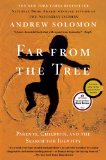Summary | Excerpt | Reading Guide | Reviews | Beyond the Book | Readalikes | Genres & Themes | Author Bio

Critics' Opinion:
Readers' Opinion:
First Published:
Nov 2012, 976 pages
Paperback:
Oct 2013, 976 pages
 Book Reviewed by:
Book Reviewed by:
Morgan Macgregor
Buy This Book
Chapter One: Son
There is no such thing as reproduction. When two people decide to have a baby, they engage in an act of production, and the widespread use of the word reproduction for this activity, with its implication that two people are but braiding themselves together, is at best a euphemism to comfort prospective parents before they get in over their heads. In the subconscious fantasies that make conception look so alluring, it is often ourselves that we would like to see live forever, not someone with a personality of his own. Having anticipated the onward march of our selfish genes, many of us are unprepared for children who present unfamiliar needs. Parenthood abruptly catapults us into a permanent relationship with a stranger, and the more alien the stranger, the stronger the whiff of negativity. We depend on the guarantee in our children's faces that we will not die. Children whose defining quality annihilates that fantasy of immortality are a particular insult; we must love them for themselves, and not for the best of ourselves in them, and that is a great deal harder to do. Loving our own children is an exercise for the imagination.
Yet blood, in modern as in ancient societies, is thicker than water. Little is more gratifying than successful and devoted children, and few situations are worse than filial failure or rejection. Our children are not us: they carry throwback genes and recessive traits and are subject right from the start to environmental stimuli beyond our control. And yet we are our children; the reality of being a parent never leaves those who have braved the metamorphosis. The psychoanalyst D. W. Winnicott once said, "There is no such thing as a baby — meaning that if you set out to describe a baby, you will find you are describing a baby and someone. A baby cannot exist alone but is essentially part of a relationship." Insofar as our children resemble us, they are our most precious admirers, and insofar as they differ, they can be our most vehement detractors. From the beginning, we tempt them into imitation of us and long for what may be life's most profound compliment: their choosing to live according to our own system of values. Though many of us take pride in how different we are from our parents, we are endlessly sad at how different our children are from us.
Because of the transmission of identity from one generation to the next, most children share at least some traits with their parents. These are vertical identities. Attributes and values are passed down from parent to child across the generations not only through strands of DNA, but also through shared cultural norms. Ethnicity, for example, is a vertical identity. Children of color are in general born to parents of color; the genetic fact of skin pigmentation is transmitted across generations along with a self-image as a person of color, even though that self-image may be subject to generational flux. Language is usually vertical, since most people who speak Greek raise their children to speak Greek, too, even if they inflect it differently or speak another language much of the time. Religion is moderately vertical: Catholic parents will tend to bring up Catholic children, though the children may turn irreligious or convert to another faith. Nationality is vertical, except for immigrants. Blondness and myopia are often transmitted from parent to child, but in most cases do not form a significant basis for identity — blondness because it is fairly insignificant, and myopia because it is easily corrected.
Often, however, someone has an inherent or acquired trait that is foreign to his or her parents and must therefore acquire identity from a peer group. This is a horizontal identity. Such horizontal identities may reflect recessive genes, random mutations, prenatal influences, or values and preferences that a child does not share with his progenitors. Being gay is a horizontal identity; most gay kids are born to straight parents, and while their sexuality is not determined by their peers, they learn gay identity by observing and participating in a subculture outside the family. Physical disability tends to be horizontal, as does genius. Psychopathy, too, is often horizontal; most criminals are not raised by mobsters and must invent their own treachery. So are conditions such as autism and intellectual disability. A child conceived in rape is born into emotional challenges that his own mother cannot know, even though they spring from her trauma.
Excerpted from Far From the Tree: Parents, Children, and the Search for Identity by Andrew Solomon. Copyright 2012 by Andrew Solomon. Excerpted with permission of Scribner, a division of Simon & Schuster, Inc.





The House on Biscayne Bay
by Chanel Cleeton
As death stalks a gothic mansion in Miami, the lives of two women intertwine as the past and present collide.

The Flower Sisters
by Michelle Collins Anderson
From the new Fannie Flagg of the Ozarks, a richly-woven story of family, forgiveness, and reinvention.

The Funeral Cryer by Wenyan Lu
Debut novelist Wenyan Lu brings us this witty yet profound story about one woman's midlife reawakening in contemporary rural China.
Your guide toexceptional books
BookBrowse seeks out and recommends the best in contemporary fiction and nonfiction—books that not only engage and entertain but also deepen our understanding of ourselves and the world around us.